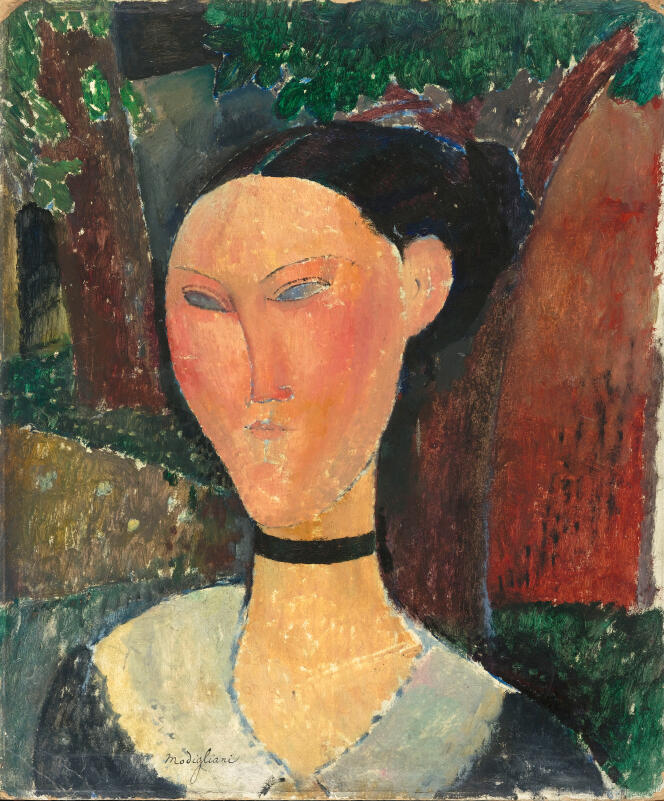
This may be a small exhibition, but it is also a focused and dense one with regards to its focus of attention: The Musée de l'Orangerie in Paris is presenting 22 paintings, eight sculptures, as many photographs and a wealth of archival documents illustrating the development of a very special relationship between the artist Amedeo Modigliani (1884-1920) and a then-fledgling art dealer named Paul Guillaume (1891-1934).
They met through the poet Max Jacob (1876-1944), who had already introduced the artist to one of his companions, the English poet Béatrice Hastings (1879-1943). Beyond the commercial aspects of their relationship, poetry was precisely what bound them together. "Modigliani loved and had opinions about poetry," recalled Guillaume. "Not in a cold, incomplete way like a university lecturer, but with a mysteriously gifted soul for sensitive and adventurous things."
Guillaume was only 23 when they met. He ran a luxury car garage in Paris. Legend has it that during the delivery of a rubber shipment from Gabon destined for the production of tires, he discovered some African art objects in the crates and immediately fell in love with them. His taste was confirmed after meeting with Guillaume Apollinaire, already a connoisseur of such objects, and he continued his acquisitions, deciding to exhibit them in his garage. As for Modigliani, he was a regular visitor to the Musée du Trocadéro, which housed an important collection. This, along with poetry, was their second common ground.
Under Brancusi's influence
The exhibition layout, designed by the curators Simonetta Fraquelli and Cécile Girardeau, simply but cleverly conveys how important the primitive arts were for both men and especially for Modigliani: The side-by-side installation of a Fang mask from Gabon and a portrait painted by the Italian known as Woman with Velvet Ribbon speaks for itself given how much the style of the latter seems to derive from the former.

When he opened his first gallery on Rue de Miromesnil in February 1914, Guillaume similarly juxtaposed works by Francis Picabia and Giorgio De Chirico with African sculptures. His ubiquitousness in this field became such that, when the painter and collector Marius de Zayas organized the first exhibition devoted to African art in the United States at Alfred Stieglitz's 291 gallery in New York, 18 pieces came from Guillaume's personal collection.
The real collaboration between the dealer and Modigliani began in 1915, with a portrait of the former by the latter dating from this same year. Guillaume is depicted with a thin mustache, looking down on the painter, wearing a tie, a hat and gloves, and holding a cigarette. In addition to his signature, the artist wrote his model's name on the painting and added the words "novo pilota" ("new pilot") in capital letters. This is how the very young dealer saw himself: Didn't he boast of having redirected the career of Modigliani, who, under Brancusi's influence, wanted to become a sculptor? "Rightly or wrongly," he wrote, "it was I who was responsible for getting him to paint..."
You have 33.86% of this article left to read. The rest is for subscribers only.